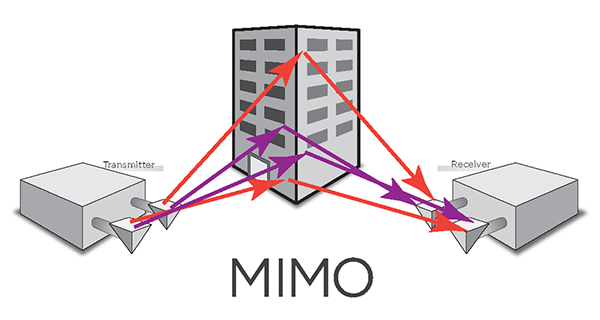
What is 5G? [Video]
Video uploaded by Techquickie on April 14, 2017
5G Mobile Standard – Why this standard will shape the future
Be it programmers, product designers, mobile phone providers or car manufacturers: As soon as experts are asked about the technologies of the future, the keyword “connectivity” is inevitably mentioned. It is already widely established today that electronic devices regularly exchange data with each other.
Because one thing is certain: The Internet of Things (IoT) will drastically change the lives of all of us and most likely also make them much easier. These include, for example, smartphones that can find out at the click of a mouse whether there are still enough eggs in the refrigerator, or autonomous vehicles that exchange information about various traffic disturbances and inform the AC unit when the owner will be at home and that he wants to find a pleasant temperature there, for example on particularly hot summer days. Such technical achievements may still seem a long way from being achieved by many, but they are already part of reality.
The mobile standard 5G – Near real-time becomes reality
The fifth generation mobile standard – 5G – will become reality in the near future: The various advantages include, for example, data rates of up to 10 gigabytes per second, which would also reduce latency to less than one millisecond, making delays almost imperceptible. This leads to the fact that one can speak of a “real-time network”.
So far, however, the demand among the general population does not seem to exist, which is perhaps also due to the fact that the need for a 5G network cannot be recognized at present. However, this will change drastically in the near future, whereby the fifth generation mobile standard will also require mobile phones and routers that support the technology.
Security – The Challenges of a 5G System
Of course, data security will also play a decisive role in times of digitization, and the 5G network will also be affected. For example, it would be conceivable that the Internet of Things could in many cases be an advantage for hackers, as they could, for example, lock out various users from their houses, open their homes with ease or even gain access to automobiles if they managed to gain access to the respective networks.
This fear is also aggravated by the fact that the transmission rates with 5G will generally reach a particularly high level, which means that malicious software can be imported into a system unnoticed within the shortest of episodes.
However, 5G also has numerous advantages, such as the fact that WiFi-networks, which today are known to be a high risk factor for malicious software, will probably become superfluous in the future.
Multiple Input & Multiple Output
The abbreviation MIMO denotes Multiple Input & Multiple Output, which will represent a further innovation in digitization: This technology means that individual radio masts can transmit more data in less time, which is achieved by equipping them with countless programmable antennas.

Multiple-input and multiple-output, or MIMO is a method for multiplying the capacity of a radio link using multiple transmit and receive antennas.
In addition, transmission rates are also improved in poor reception situations, which means that undersaturated areas in particular can benefit from this outstanding data transmission rate. This applies both to existing systems and to new installations, which is a very inconvenient aspect.
MIMO is one of several intelligent antenna technologies besides MISO and SIMO, but for many it is the most promising one.
The Industry plays a crucial role
But of course, the industry is particularly in demand for the introduction of 5G, because it contributes a high share to the fact that certain standards in the market also exist. This process is often made more difficult by the fact that many different standards are being developed and only one standard prevails over the other competitors. However, these standards are needed, and all members of the 3GPP association are largely convinced of the need for such standards, which will significantly promote the continued use of industry norms in this area.
However, there is no doubt that the Internet of Things will represent such a major change in the lives of all people as the Internet once did.
But what makes 5G mobile standard so special?
5G is not only able to transport more data, but also requires significantly less energy, which is an enormous advantage over other data standards. It is also possible to integrate a large number of smaller sensors into this achievement of digitization, which perform all kinds of tasks and enable communications that can make life much easier.
Slicing is also possible with 5G, which describes the splitting of a net into many smaller versions.
Slicing, for example, can help to integrate a sensor into the network that only transmits a certain temperature value from the home once a day or that, for example, enormously important transmissions can be sent and received with the lowest possible failure rate.
When is 5G expected to be available?
This question is of course difficult to answer, although some experts believe that the launch will take place as early as 2020. Of course, this also depends on the extent to which public demand increases, with industry in particular playing an important role in how quickly 5G will reach the consumer market.
But one thing is for sure: 5G is coming and will drastically change the lives of all of us, together with the Internet of Things. So we can be very curious about what our future everyday life will look like, surrounded by enormously advanced technologies. Will everything develop positively or will negative aspects be present, which we are perhaps not thinking about at all today?
The future of digitization will definitely answer this burning question – and 5G will certainly be one aspect of it!
Links
- Comparison of phone standards, including 5G mobile standards – Wikipedia.
- Sell your old mobile phones for top dollar – iGotOffer.
- 5G Mobile network is coming, is the industry ready?
- Get to know what 5G is?






Facebook
Twitter
RSS